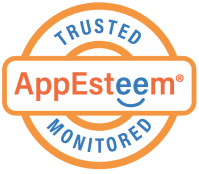How to Fix the “USB Device Not Recognized” Error
The “USB device not recognized” error is a common issue many users face when connecting a USB drive or device to their PC. It may result from hardware problems, driver conflicts, or corrupted system files. Understanding how to fix a malfunctioning USB drive can save you from data loss or device replacement costs. Fortunately, the error can be fixed with special software that repairs system elements and tunes up system settings.
This article explains what the “USB device not recognized” error means, its common causes, and effective methods to fix it.
Contents
[hide]Ways to repair the “USB device not recognized” error
Advanced users might troubleshoot manually by updating drivers or adjusting power settings. However, these methods can be risky for those unfamiliar with system configurations. For less experienced users or those seeking an easier solution on how to fix a malfunctioning USB drive, specialized software like Outbyte PC Repair can help resolve the issue efficiently without needing in-depth technical expertise.
The following steps should help fix the issue:
-
Download Outbyte PC Repair application
Special offer. See more information about Outbyte; uninstall instructions; EULA; Privacy Policy. - Install and launch the application.
- Click the Scan Now button to detect potential issue causes.
- Click the Repair All button to fix the issues.
The same application can be used to run preventative measures to reduce the chance of this or other system issues appearing in the future.
Meaning of the “USB device not recognized” error
This error message appears when your computer cannot properly identify or communicate with the connected USB device. The error typically indicates issues like driver incompatibility, hardware failure, or power supply problems. While it offers some clues, pinpointing the exact cause often requires a combination of technical knowledge and diagnostic tools.
Using a solution like Outbyte PC Repair simplifies this process by identifying and fixing underlying issues automatically.
Causes of the “USB device not recognized” error
Understanding what triggers this error can help you avoid it in the future. Here are the most common causes:
- Faulty USB ports or cables — physical damage can prevent proper connections.
- Outdated or corrupted drivers — drivers are essential for device communication; if they’re missing or damaged, errors can occur.
- Power supply issues — insufficient power delivery to the USB device can cause recognition failures.
- Corrupted system files — system errors or registry issues may disrupt the USB connection.
Most popular errors and issues
| Error code/issue | Brief description |
Error code 0x80070643 | Indicates installation or update failures; often linked to corrupted files or system conflicts |
No sound on PC | Often caused by outdated drivers or sound settings misconfigurations |
0x80073CF9 | Typically occurs due to insufficient storage or corrupted app data |
Event ID 1000 | Application crash logs provide clues for troubleshooting |
Program will not uninstall | May require uninstaller tools to remove stubborn software |
Error code 0x80072f8f 0x20000 | Usually linked to incorrect system time or date settings |
0x426 0x0 | Indicates a failed app installation |
Windows COM stopcode | Related to system conflicts |
403 forbidden | Denotes access restrictions |
Error 0x80004005 | Caused by network access issues or file permission conflicts |
api-ms-win-core-path-l1-1-0.dll | Related to missing Windows Core API components |
vcruntime140.dll | Related to missing Visual C++ components |
msvcp140.dll | Related to missing Visual C++ components |
The following steps should fix the “USB device not recognized” error:
- Step 1. Download Outbyte PC Repair application See more information about Outbyte; uninstall instructions; EULA; Privacy Policy.
- Step 2. Install and launch the application.
- Step 3. Click the Scan Now button to detect potential issue causes.
- Step 4. Click the Repair All button to fix the issues.
| Compatibility | Win 11, 10, 8, 7 |
| Download Size | 21.2 MB |
| Requirements | 300 MHz Processor, 256 MB RAM, 50 MB HDD space |
Limitations: The trial version offers an unlimited number of scans, backups, and restores of your Windows system elements for free. Registration for the full version starts at USD 29.95.

Outbyte PC Repair (version 1.1.12.641) is certified by AppEsteem – a trusted cybersecurity organization – with ongoing monitoring.
Being able to meet all of AppEsteem’s strict requirements means that Outbyte PC Repair can be considered clean, safe, and transparent; and that it is compliant with the ethical and legal norms of distribution.
AppEsteem is one of the world’s most prominent cybersecurity organizations that contributes to the safety of more than 2 billion users. The company was founded by a team of experienced Microsoft cybersecurity specialists. Its mission is to create a safe space for computer and internet users where they are protected against cyber threats and deceptive or unethical practices.



